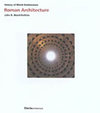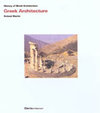
-
 Nemecký jazyk
Nemecký jazyk
Perspektiven für eine nachhaltige Stadtentwicklung in Zentralasien
Autor: Gregor Mews
Diplomarbeit aus dem Jahr 2006 im Fachbereich Geowissenschaften / Geographie - Bevölkerungsgeographie, Stadt- u. Raumplanung, Note: 1.3, Technische Universität Berlin, Sprache: Deutsch, Abstract: The following work is subdivided into seven relevant chapters.... Viac o knihe
Na objednávku
44.37 €
bežná cena: 49.30 €
O knihe
Diplomarbeit aus dem Jahr 2006 im Fachbereich Geowissenschaften / Geographie - Bevölkerungsgeographie, Stadt- u. Raumplanung, Note: 1.3, Technische Universität Berlin, Sprache: Deutsch, Abstract: The following work is subdivided into seven relevant chapters. Each of them is based on the previous one. First of all the paper starts with an introduction, which contains the aim, assumptions, thesis, questions concerning the topic, risks and potentials as well as the approach of the work.
In order to achieve a reasonable result it is nessesary to start with a definition about sustainability and sustainable development. Within that part themes like origin of the term, fundamental idea of sustainable development, different concepts, critical point of views, different dimensions of sustainable development, relationship between the dimensions and sustainable urban development are being reflected. Finally a definition of sustainable development has been created and is paving the way to achieve an adequate solution.
However, in the following part the indicator approach for measuring sustainable development is being discussed. After looking at the different techniques the chosen strategy is going to be explained. With the basic idea behind the indicator system of the Comission of Sustainable Development and a redefinition it is possible to analyse the situation of cities in Central Asia. Further more this chapter contains the theoretical framework for the next step.
Shortly after a brief introduction into the Central Asian Region and Kazakhstan the city of Almaty as the essential part of the work will be presented. By using the previous defined framework indicators are going to be emphasized. The structure is following different dimensions of sustainability.
Last but not least the result evaluation is looking at the indicator packages and is allocating the conclusions from the previous part into a special defined hierarchy. Through the distinguished results it is possible to underline the general thesis and assumtions. Further more it allows a critical review and possible actions in order to achieve a sustainable development. www.almatylink.de
- Vydavateľstvo: Examicus Verlag
- Rok vydania: 2012
- Formát: Paperback
- Rozmer: 210 x 148 mm
- Jazyk: Nemecký jazyk
- ISBN: 9783869431475

 Anglický jazyk
Anglický jazyk 









